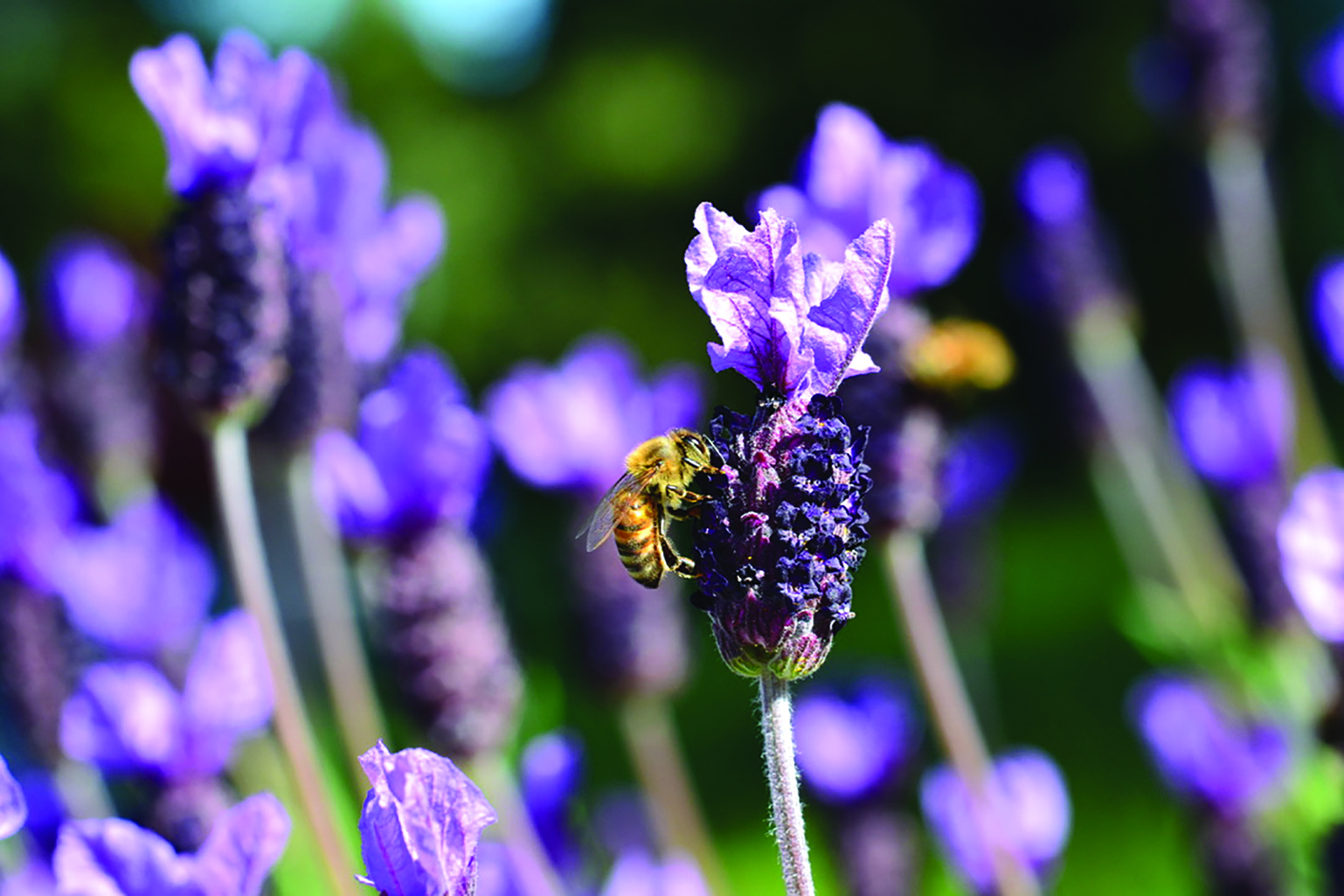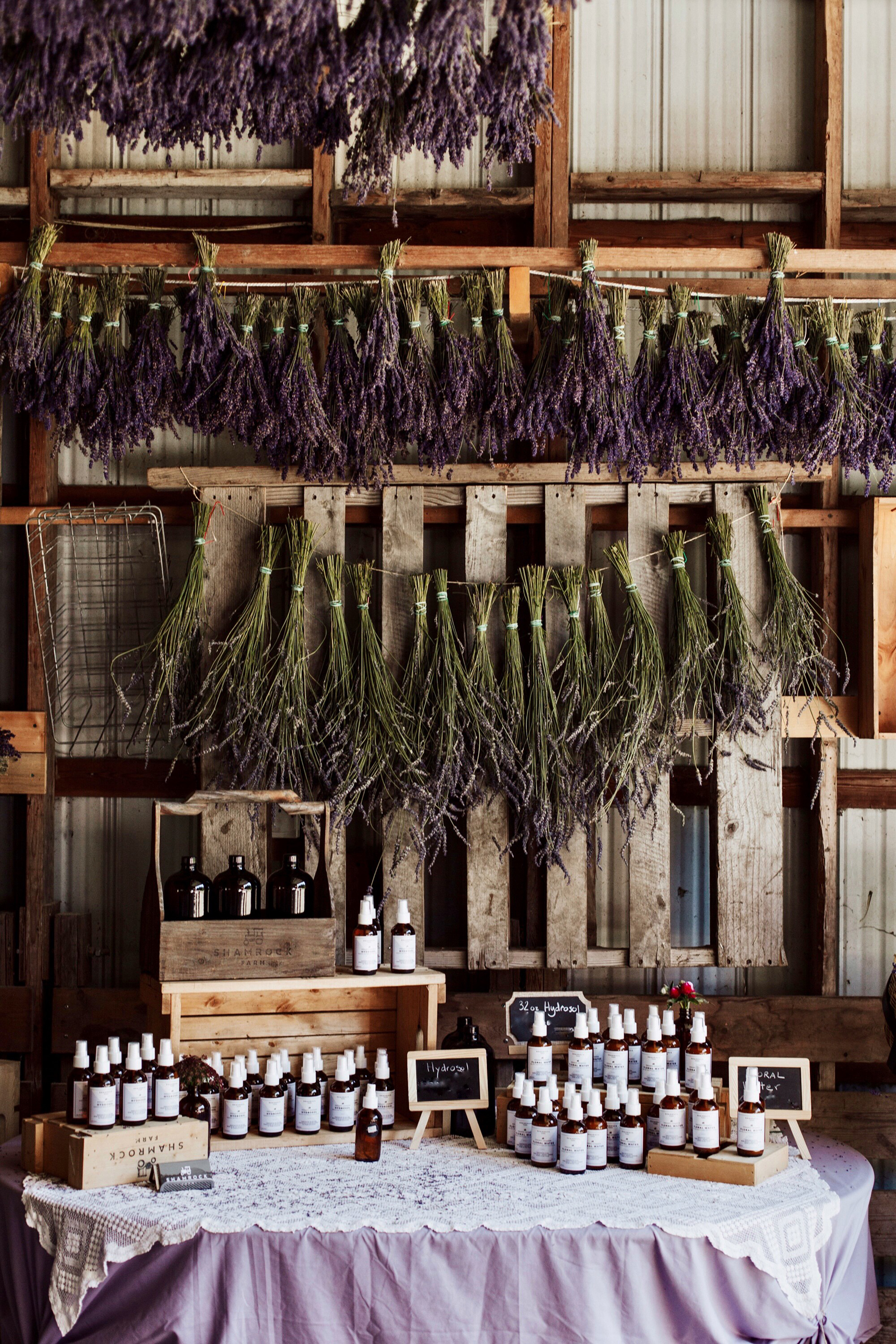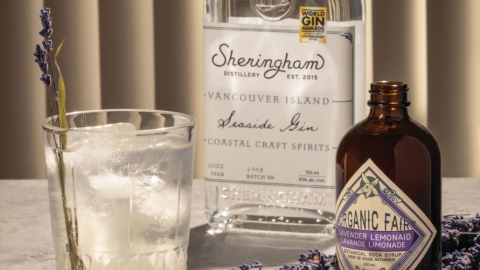For the Love of Lavender
Sprawling fields rich in fragrance and vibrant purple blooms, humming with insects; a soothing antidote to anxiety; a calming sleep spray; small dried posies in sock drawers; and flecks sprinkled throughout baked goods—lavender has a multitude of uses that go far beyond the beauty of their eye-catching colour.
The first documented cultivation of this perennial shrub was some 3000 years ago. Lavender was revered in ancient Egypt for both its fragrance and soothing properties. It made its way to Europe, where the Romans used it for laundry and as an antiseptic, and eventually became loved by Queen Elizabeth I for tea, perfume and table decor. Lavender arrived in North America around the mid-1600s (although it was not immediately successful in its new climate).
Today, French and English varieties are popular in the Pacific Northwest—nestled among personal gardens, but also the central focus of farms sprinkled across Vancouver Island, where a summer day spent among the rows of colour and perfume and the buzz of bees, beckons. Many of the Island’s lavender farms also create libations and beauty products made from dried lavender, or their own distilled essential oils. From delectable hot chocolate, syrup, honey and baked goods for the table, to healing salves, soaps, sprays and soaks for the bathroom or bedroom, there are plenty of lavender-infused goodies to take home.
Growing lavender 
Beyond the delights curated for human consumption, there are monumental ecological benefits to growing lavender, as it's a shrub that bees and other pollinators love. In addition to having organic status, Ben of Lavender & Black on Salt Spring Island explains how they have elevated their commitment to enhancing the pollinator habitat within their farm while also educating visitors about their importance by receiving a Pollinator Steward Certification. The certification involved a course with the Pollinator Stewardship Council of Canada, focussing on bee habitat enhancement. “We have a lavender farm which provides plenty of habitat for bees, but that’s seasonal. Part of thinking about pollinator habitats is how do we extend the season to provide them with forage for more of the year—choosing native plants that tend to flower earlier or later, and making our farm a mixture of farmed and wild, natural areas,” shares Ben.
Of course, if you have succumbed to what Happy Valley Lavender affectionately refers to as “lavenderitis," then you’ll want to know how you yourself can start, grow, care for, harvest and utilize lavender.
As it’s not native to Canada, there can be difficulties in cultivating your own array of these popular shrubs, although Shannon at Shamrock Farm shares that the Comox Valley is “perfect” for it. Lavender thrives in full sun and well-drained soil, which can be tricky in the often-wet Pacific Northwest. On the plus side, they are deer- and rabbit-resistant. Drought-resistant too, they will do well in the increasingly hot and dry summers, or for anyone keen to be savvy with their water consumption. Avoid overwatering and don’t pile on the compost, either—lavender doesn’t like overly rich soil. Once fully grown, they are fairly low maintenance besides annual pruning. But to reap those rewards, you first must practice plenty of patience if growing them from seed, or pick up a potted plant from your local farm and transplant them for a more reliable way to start enjoying the blooms and their benefits in your own yard.
Harvesting at home
 When it comes to harvesting, whether for culinary flavours or aromatherapeutic qualities, it is best to snip individual stems before all the flowers have opened (around half of the stems), and early in the day before it gets warm. The ideal month for this can vary slightly depending where on the Island you are, as well as the conditions that year. Gather the lavender into small bundles you can loosely tie with string, and hang-dry somewhere sheltered with good airflow.
When it comes to harvesting, whether for culinary flavours or aromatherapeutic qualities, it is best to snip individual stems before all the flowers have opened (around half of the stems), and early in the day before it gets warm. The ideal month for this can vary slightly depending where on the Island you are, as well as the conditions that year. Gather the lavender into small bundles you can loosely tie with string, and hang-dry somewhere sheltered with good airflow.
One way to improve your chances of learning the perfect method is to first join Shamrock Farm for their summer lavender harvest in July or August. Admire their renowned lavender wall and bundles of drying English lavender in the barn, wander among the rows, discover how they distill their oils, and harvest your own lavender. It’s a wonderful (and free) event—a chance, says Shannon, “to share in an authentic farm experience, see how things are done, and meet the farmers.”
A bouquet of benefits
To take your love for lavender one step further and learn to distill your own lavender essential oils from your own crop or elsewhere, delve into a distilling workshop at Lavender and Black. They first started distilling to “maximize the benefits of these plants—from drying and tinctures to the fragrance and culinary uses.” Their expertise expanded into workshops that share a traditional, high-quality method of copper distilling and demonstrate the philosophy of how they do things on the farm. "It's a very rounded experience," shares Ben.
For more inspiration on what to do with your cuttings, try one of Island Lavender and Martha Delectables’ co-created lavender cookies, and be sure to make the most of lavender season with a day out at one of the increasing number of lavender farms across the Island—or be inspired to start growing your own. We anticipate the Island to soon be humming with the buzz of happy bees, and a case of “lavenderitis” coming on.
|
Vancouver Island and Gulf Island Lavender Farms
Arbutus Meadows | Shamrock Farm | Westhaven Farm | Cowichan Valley Lavender | Bilston Creek Farm | Damali Lavender and Winery | Island Lavender | Sooke Organic Lavender | Happy Valley Lavender & Herbs | Lavender & Black | Sacred Mountain Lavender |






